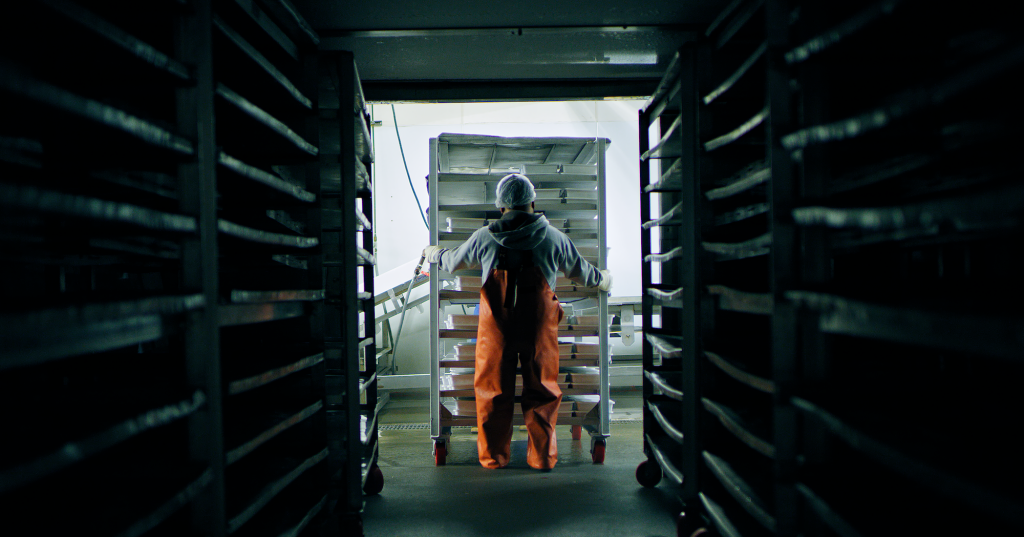“The supply chain challenges are starting to hit us more now than they ever have before,” said Guy Pizzuti, Seafood director for Publix Super Markets, during a panel discussion that kicked off the Alaska Seafood Marketing Institute’s annual All Hands On Deck conference today.
The pandemic flipped the seafood industry on its head with widespread and longterm shutdowns of restaurants and large foodservice venues. Although those sectors are not yet running at full capacity, they are far more robust than they were a year ago.
But the challenges and opportunities in this still-new marketplace are sending industry leaders into new territory, yet again.
Today’s discussion among representatives of the foodservice and retail industry’s seafood segments hit on the low points as well as what’s been working and what the future of seafood sales could be as new consumers flooded the retail space with new demands.
Greg Jeffers, director of Purchasing for Gorton’s, noted that the company saw a significant increase in sales as a result of pantry loading and freezer loading in 2020.
For this year, the goal shifted from simply trying to keep up with the demand of new consumers to “keeping them in the category for a long time,” said Jeffers.
That target has grown increasingly difficult to hit, especially in the last few months, according to most members of the panel, as supply chain disruptions have increased.
“It has gone from bad to worse,” said Peter Vasil, category manager for Sysco Canada.
“We’re scrambling to change ads at the last minute, switch out similar products,” said Pizzuti.
Whether those may be shored up soon is anyone’s guess. But the outlook is not bright.
“If anything it’s worse right now than it was six to nine months ago,” said Keith Brunell, Food & Beverage director for Nordstrom.
The chain is slowing access to product as well as packaging and equipment.
“We’re sitting on 27-28 week lead times on equipment,” Pizzuti said.
Those delays are adding to the constraints of responding to market demands for many retailers, pushing back new store openings, remodeling plans, and the ability to implement new processes or product segments.
“Supply chain,” Pizzuti added, “is going to be the biggest thing moving forward.”
And yet, in 2020 Publix boasted record sales in seafood. Then “the first week of October [2021], we surpassed last year,” Pizzuti said.
Convenience by way of frozen items became a major factor when shoppers reduced trips to the store during lockdowns.
“Typically our fresh case would dominate — people would buy for cooking today or tomorrow,” said Pizzuti. “Frozen really became a viable option for people making fewer trips to the grocery store.”
The convenience of frozen has piggybacked on a slow shift to selling frozen as a marker of freshness. Where frozen seafood used to have the reputation of being an inferior product, now consumers understand that seafood frozen close to the source may be even fresher than fresh.
“The model really has moved to getting it frozen as quickly as possible, so you can lock in the goodness,” said Dan Aherne, group CEO, New England Seafood International.
In addition to convenience and quality, seafood buyers are increasingly interested in how their habits of consumption affect the world around them.
“Our consumers wanted their food choices to align with their values,” said Stephanie Mitchell, senior manager of Culinary Training & Support for Sodexo.
That included options from touchless deliveries to products that make buyers feel connected to the food suppliers, as well as less of a burden on the system.
“Increasingly, one of the big things we’re going to be seeing in our market is a real ranking and clarity on the climate impact,” said Aherne. “Seafood has an incredible opportunity. It’s as good as it gets — low carbon, low water use.”
“It used to be a very niche customer that cared about that stuff,” said Pizzuti. “It’s almost becoming table stakes. If you’re not able to tell that story, you’re going to get behind the 8-ball with a growing and vocal group of customers.”
Though he also acknowledged that what consumers purport to care about on a survey versus what they end up buying isn’t always in alignment. But that may well be changing.
“During the pandemic, people have had no choice but to slow down and think,” Aherne added. “I don’t think people are going to slip right back into old habits.”
One old habit that doesn’t seem to be fading is the effect of consistent branding. As always, the mystique of Alaska’s seafood brand puts it just enough out of reach to be exciting, but not so far as to be unfamiliar.
“If I’m in Florida, product from North Carolina isn’t local. But Alaska is,” said Pizzuti.
Therein lies the result of effective marketing.







